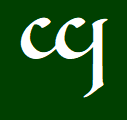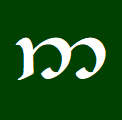5.25 Oven ᴱQ. urna n. “oven” A noun appearing as ᴱQ. urna “oven” in the Qenya Lexicon of the 1910s under the early root ᴱ√USU or ᴱ√UŘU [UÐU] whose derivatives had to do with burning (QL/98). Neo-Quenya: I would retain ᴺQ. urna for purposes of Neo-Quenya, reconceived of as a
Paul Strack
Select Elvish Words 5.17-5.24 to Blend, Cook, Bake
5.17 to Mix, Blend Q. ostimë n. “blend” A word for a “blend” appearing in notes associated with the Quendi and Eldar essay from 1959-60, more specifically “the running together of two elements” (VT39/9). It appeared only in its plural form ostimi “blends”. In the context where it appeared, it
Select Elvish Words 5.15-5.151: Thirst, Thirsty
5.15 Thirst ᴱN. faus n. “thirst” A word appearing as ᴱN. faus “thirst” in Early Noldorin Wordlists of the 1920s, a noun form of better known faug “thirsty”. Conceptual Development: In the Gnomish Lexicon of the 1910s Tolkien had G. luist “thirst” and variant luibri (GL/55) clearly from the early
Select Elvish Words 5.14: Hunger
5.14 Hunger Q. maita adj. “hungry” An adjective for “hungry” in notes from around 1960 derived from the root √MAT “eat” via i-infixion (VT39/11), which produced a small class of desiderative words in Quenya, as in “desiring to eat”. ᴱQ. saike n. “hunger” A noun appearing as ᴱQ. saike (saiki-)
Select Elvish Words 5.13: to Drink
5.13 to Drink ᴱQ. socto- n. “to give to drink, drench” A verb appearing as ᴱQ. {sokta-} >> sokto- “give to drink, drench” in the Qenya Lexicon of the 1910s under the early root ᴱ√SOKO with derivatives having to do with “drink” (QL/85). Neo-Quenya: Since √SOK reappears in Tolkien’s later
Select Elvish Words 5.12: Food
5.12 Food Q. matta n. “food” A noun for “food” from the Common Eldarin: Verb Structure (EVS2) of the early 1950s, derived from primitive ✶matnā, originally an ancient adjective meaning “eaten” (PE22/136). Conceptual Development: In the Qenya Lexicon of the 1910s the word for “food” was ᴱQ. matl under the
Select Elvish Words 5.11: to Eat
5.11 to Eat ᴱQ. lávear n. “glutton” A noun for “glutton” in the Qenya Lexicon of the 1910s derived from the early root ᴱ√LAVA “lick”, with a stem form of láveard- (QL/52). Neo-Quenya: I think this word can be salvaged for purposes of Neo-Quenya as an abnormal agental formation from
Select Elvish Words 4.99: Naked, Bare
4.99 Naked, Bare ᴹQ. helda adj. “naked, stripped bare” An adjective for “naked” in The Etymologies of the 1930s derived from primitive ᴹ✶skelnā under the root ᴹ√SKEL (Ety/SKEL). In the entry for ᴹ√SKAL¹ “screen, hide”, helda was glossed “stripped bare” and contrasted with ᴹQ. halda “veiled, hidden” (Ety/SKAL¹). This comparison
Eldamo 0.8.4 is released
https://eldamo.org/ This release has the dictionary entries for semantic category 4 = Body Parts and Functions.
Select Elvish Words 4.93-4.98: Bald, Dumb, Blind, Drunk
4.93 Bald Q. parnë adj. “bald, bare, ⚠️naked” A word derived from √PAR “peel” appearing in various notes from the late 1950s and early 1960s, given as parna or parne and variously translated as “bare”, “bare, naked” and “bald, bare” (PE17/86, 171). In one note its primitive base PARAN was




